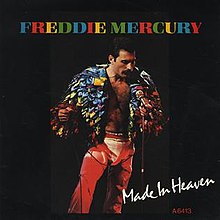
Made in Heaven is the fifteenth and final studio album by the British rock band Queen, released on 6 November 1995 by Parlophone Records in the United Kingdom and by Hollywood Records in the United States. It was the band's first and only album released solely under the name "Queen" after the death of lead singer Freddie Mercury in 1991. Following Mercury's death, guitarist Brian May, drummer Roger Taylor, and bass guitarist John Deacon worked with vocal and piano parts that Mercury recorded before his death, adding new instrumentation to the recordings. Both stages of recording, before and after Mercury's death, were completed at the band's studio in Montreux, Switzerland. The album debuted at number 1 in the UK, where it went quadruple platinum selling 1.2 million copies. 500,000 copies were shipped in the United States.
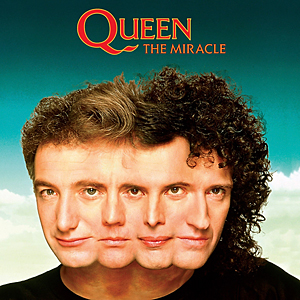
The Miracle is the thirteenth studio album by the British rock band Queen, released on 22 May 1989 by Parlophone Records and Capitol Records in both the United Kingdom and the U.S. respectively, where it was the band's only studio album to be released on latter label. The album was recorded as the band recovered from Brian May's marital problems and Freddie Mercury's HIV diagnosis in 1987. Recording started in January 1988 and lasted for an entire year. The album was originally going to be called The Invisible Men, but three weeks before the release, according to Roger Taylor, they changed the name to The Miracle. It was also the last Queen album with a photo of the band on the front cover.
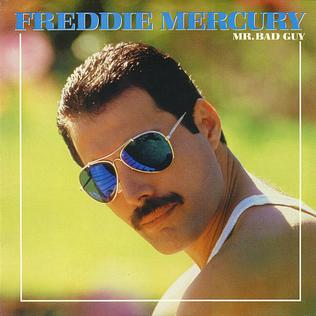
Mr. Bad Guy is the first solo studio album by British musician Freddie Mercury, lead singer of Queen. Released in 1985, during a period in which Queen were on hiatus from recording, it contains eleven songs, all written by Mercury himself.

Hot Space is the tenth studio album by the British rock band Queen. It was released on 4 May 1982 by EMI Records in the UK and by Elektra Records in the US. Marking a notable shift in direction from their earlier work, they employed many elements of disco, funk, R&B, dance, pop and new wave music on the album. This made the album less popular with fans who preferred the traditional rock style they had come to associate with the band. Queen's decision to record a dance-oriented album germinated with the massive success of their 1980 hit "Another One Bites the Dust" in the US.

"I Was Born to Love You" is a 1985 song by Freddie Mercury that was released as a single from his first solo album, Mr. Bad Guy. After Mercury's death, Queen re-worked this song for their album Made in Heaven in 1995, by having the other members play their instrumental parts over the original track, transforming the song from disco to rock. The Queen version from the Made in Heaven album also includes snippets of Mercury's ad-lib vocals taken from "A Kind of Magic" and from "Living on My Own".

"One Vision" is a song written and recorded by the British rock band Queen, first released as a single in November 1985 and then included on their 1986 album A Kind of Magic. It was conceived by the group's drummer Roger Taylor.
"No-One But You " is the final single recorded by the British rock band Queen. Recorded and released in 1997, six years after the death of lead singer Freddie Mercury, it is the only Queen recording to feature a three-piece lineup: guitarist Brian May, drummer Roger Taylor, and bassist John Deacon. May and Taylor share lead vocals. The song was released on the album Queen Rocks and it was also released as a double a-side single with "Tie Your Mother Down". It was later included on the compilation album Greatest Hits III.
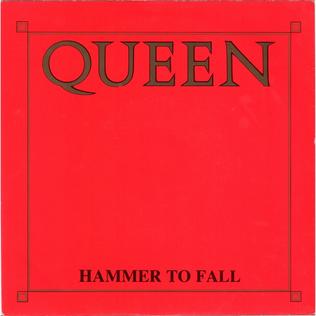
"Hammer to Fall" is a 1984 song by the British rock band Queen. Written by guitarist Brian May, the song is the eighth track on their 1984 album The Works. It was the fourth and final single to be released from that album, although the single version was edited down by thirty seconds from the version on the album. Different sleeves were used to package this single and the live picture sleeve is now a collector's item. The song harks back to the old roots of the band, being built around a hard angular and muscular riff.
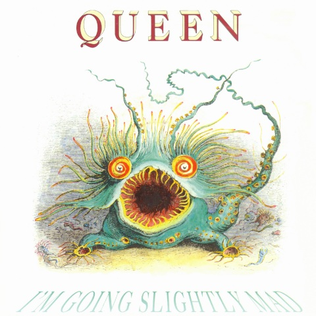
"I'm Going Slightly Mad" is a song by the British rock band Queen. Written by Freddie Mercury but credited to Queen, with uncredited lyrical contributions by Peter Straker, it was released as the second single from the band's 1991 album Innuendo. The song was released as a single on 4 March 1991, a month after the release of the album. The lyrics and the accompanying music video project the song as humorous and light-hearted, despite the lyrics dealing with the mental decline Mercury was experiencing as one of the effects of advancing AIDS.

"Who Wants to Live Forever" is a song by the British rock band Queen. A power ballad, it is the sixth track on the album A Kind of Magic, which was released in June 1986, and was written by lead guitarist Brian May for the soundtrack to the film Highlander. Queen was backed up by an orchestra, with orchestrations by film score composer Michael Kamen. The song peaked at No. 24 in the UK charts. In 1991, it was included in the band's second compilation album Greatest Hits II.

"Too Much Love Will Kill You" is a song written by British guitarist Brian May of Queen, Frank Musker and Elizabeth Lamers. The song reflected the breakdown of May's first marriage and attraction to his future wife, Anita Dobson. It was first recorded by Queen around 1988 or before, and was intended to be on the band's The Miracle album in 1989, but did not make the cut due to legal disputes following the band's decision that all songs on the album would be written by the group as opposed to individuals.

"I Want It All" is a song by British rock band Queen, featured on their 1989 studio album, The Miracle. Written by guitarist and vocalist Brian May and produced by David Richards, it was released as the first single from the album on 2 May 1989. "I Want It All" reached number three on the singles charts of the United Kingdom, Finland, Ireland and New Zealand, as well as on the US Billboard Album Rock Tracks chart. Elsewhere, it peaked at number two in the Netherlands and charted within the top 10 in Australia, Belgium, Germany, Norway and Switzerland. With its message about fighting for one's own goals it became an anti-apartheid protest song in South Africa.
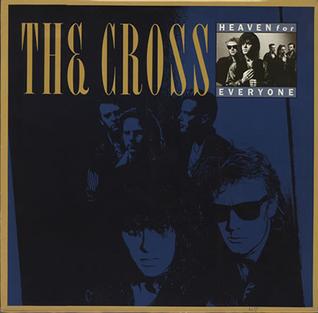
"Heaven for Everyone" is a song written by Queen drummer Roger Taylor. It originally appeared on his side project the Cross's album Shove It, with Freddie Mercury as a guest vocalist, and it is the album's fourth track. It was reworked with Queen's music and appeared in the 1995 album Made in Heaven where it was the seventh track, and was released as the first single – four years after Mercury's death. Queen's version reached number two on the UK Singles Chart while peaking at number one in Hungary and becoming a top-ten hit in several other European nations. In 1999 it was included in Queen’s compilation album Greatest Hits III.
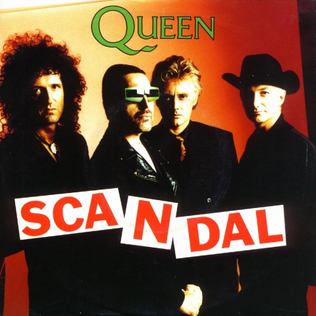
"Scandal" is a song by the British rock band Queen. It was released as the fourth single from their 1989 album The Miracle and peaked at #25 in the UK. The single was released in the United States but failed to chart.
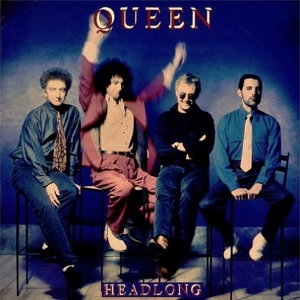
"Headlong" is a song by British rock band Queen, released as the third single from their fourteenth studio album, Innuendo (1991). The song was written by Queen guitarist Brian May, who intended to record it for his then-upcoming solo album Back to the Light (1992), but when he heard Queen lead singer Freddie Mercury sing the track, he allowed it to become a Queen song. As with all the songs on Innuendo, the track was promptly credited to the entire band.

"The Miracle" is the fifth and final single from Queen's 1989 studio album of the same name. It was composed by the entire band, though Freddie Mercury and John Deacon were the main writers. It was released as a single on 27 November 1989 and it was the band's final single release of the 1980s.

"A Winter's Tale" is a song by Queen, from the album Made in Heaven, released in 1995 after Freddie Mercury's death in 1991. It was written after the Innuendo sessions, inspired as Mercury was staring out the windows of various places in Montreux. The song has a psychedelic, dreamy feel, and describes what Mercury saw outside the windows.

The Works is the eleventh studio album by the British rock band Queen. It was released on 27 February 1984 by EMI Records just shortly after recording for the album had been completed in the United Kingdom and it is the band's first studio album to be released by Capitol Records in the United States. After the synth-heavy Hot Space (1982), the album saw the re-emergence of Brian May and Roger Taylor's rock sound, while still incorporating the early 80s retro futuristic electronic music and New York funk scenes. Recorded at the Record Plant Studios in Los Angeles, California, and Musicland Studios in Munich, Germany, from August 1983 to January 1984, the album's title comes from a comment Taylor made as recording began – "Let's give them the works!".
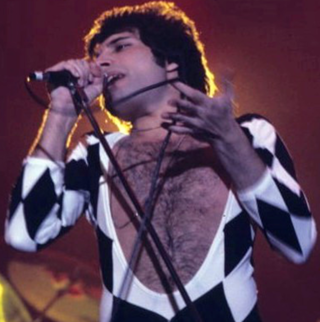
As well as his work with Queen, Freddie Mercury released two solo albums and several singles. Although his solo work was not as commercially successful as most Queen albums, the two off-Queen albums and several of the singles debuted in the top 10 of the UK Music Charts. Following Mercury's death in 1991, several posthumous box sets and compilation albums have been released.

"In My Defence" is a song performed by Queen lead vocalist Freddie Mercury. It was from the 1986 musical Time by Dave Clark and featured on the Time concept album. The song was not a hit during Mercury's lifetime but was released posthumously in November 1992, reaching number eight on the UK Singles Chart.
